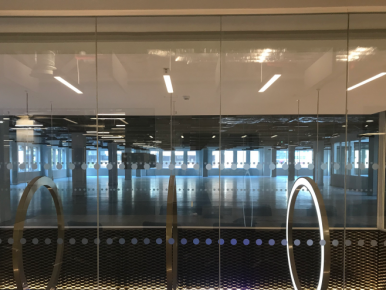[adsanity id=1583064 align=aligncenter /]
Sponsored bySolvency II: only part of the picture
While important, Solvency II and the low yield environment were not the only areas of focus for the industry. One participant noted that some insurers were exposed to long-term pension risk, which may fall under IORPs Directive rather than Solvency II. It was mentioned that in many organisations the AMSB was not sufficiently engaged in the governance processes and the use of Internal Models. In addition, France, like other Member States, was watching the implementation of rules across the EU carefully to ensure a level playing field. One participant raised questions about Internal Models, asking if they would be more standardised in the future to allow for a better comparison between firms.Diverging interpretation of the rules
The question of interpretation of the rules is coming to the fore. A number of asset managers noted that clients based in different parts of France were being subject to different interpretations of the rules by the local controllers. For example, regarding proportionality of the look-through reporting, some controllers agreed with the pragmatic approach (full look-through for major investments, an aggregated approach for mid-size investments and prospectus description for minor investments) while others required full look-through for all investment in funds. One participant remarked that this was also the case in cross-border instances, for example, in the risk assessment of convertible bond. Generally speaking, in France insurers are required to look at each risk separately, while in Germany they are asked to only take into account the main risk. A similar situation was noted in relation to the duration of callable bonds. Some participants lamented the lack of a single arbitration or resolution body to address such differences. One participant outlined a number of themes where the French regulator’s interpretation and emphasis of the ORSA differed from that of EIOPA. The EIOPA guidelines emphasised the ORSA process; transparency and communication; and customer focus. However, the ACPR was more focused on expanding the calculation of overall solvency needs; deepening the analysis of risks on the technical provisions; and the relationship between governance and the ORSA (especially in relation to the role of the AMSB). Inconsistencies in interpretation extended to firms themselves. Some groups noted that within the group there were solo entities that did not use negative interest rates (instead capping them at zero), which made it impossible to compare calculations across the group.Disruptive technologies in the ORSA
Emerging technologies in the forward-looking assessment of the ORSA. One participant commented that the ORSA exercise required looking at every development of the environment in which the insurance activity would evolve. They noted that they were struggling to integrate the impact of emerging technologies, such as 3D printing and advances in biomedicine into their future scenario planning. They cited developments such as car sharing, which would reduce car ownership and result in lower premium income. At the same time new skills and highly qualified staff would be required to assess these complex risks. Participants commented on the difficulty of accounting for these risks in the ORSA assessment not least because some risks have a longer time horizon than the ORSA and business planning cycle. It was also observed by some that the ORSA was more demanding than expected and that additional information had to be collected specifically for the ORSA, for example, information for stress tests, sensitivity analysis and projections.Impact of low yield
The low yield environment continues to drive investment behaviour. Although most participants agreed that the shift away from equities in the recent years had little to do with Solvency II and more with post-crisis de-risking, it was now evident that insurers were being forced to hold riskier assets to gain yield. Participants noted an increase of investment in a range of alternative asset classes, including private equity and non-EU assets. A concern was raised that markets for alternatives were not suited for large volumes of investment. There was a general consensus that the new investment strategies would impact equity markets as well. According to one participant, many insurers were now loaded with debt as a result of the low yield environment, which was impacting their credit rating. Participants expressed contradicting views on the importance of Pillar I moving forward. Some argued that it was “yesterday’s news” surpassed by challenges such as reporting as well as internal reporting for the ORSA. Others said Pillar I work was shifting to optimising investment strategies, as insurers became more comfortable with the Solvency II balance sheet.Data driving collaboration
Reporting is driving collaboration and greater awareness of data quality. Both insurers and asset managers noted that in order to meet the Solvency II reporting deadlines internal data collection times had to be shortened, which was heavily reliant on good data quality. Data requirements were also driving new data sharing collaborations. MASCF, the complementary health mutual group, began working on a shared data warehouse to help solo entities with their reporting. The initiative previously received little support among members. However, as one participant explained: “Facing a shortened period to produce the Solvency II reporting, data quality is now a big demand for everybody in the company. Everyone has understood the need to share data and to work on data quality.” A number of participants noted that the growing data demands were raising questions of data quality ownership in the organisation as well as data audit. — To subscribe to the Solvency II Wire mailing list for free click here.
To subscribe to the Solvency II Wire mailing list for free click here.
Sponsored by
[adsanity id=1583064 align=aligncenter /]
[widget id=”mp_featured_posts-4″]
]]>




